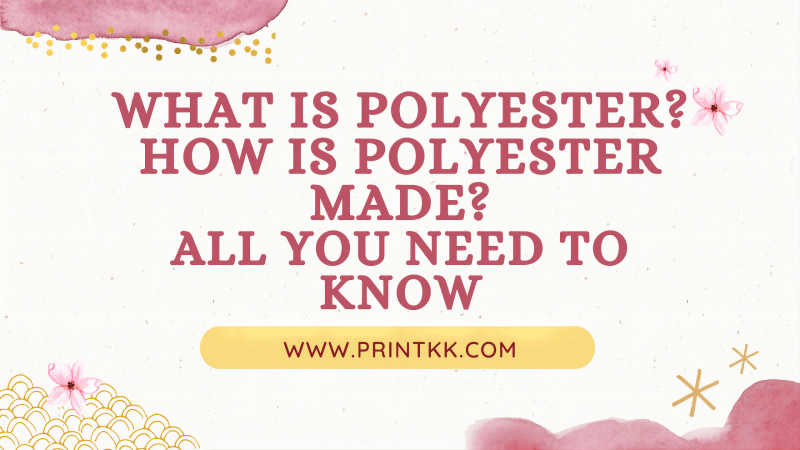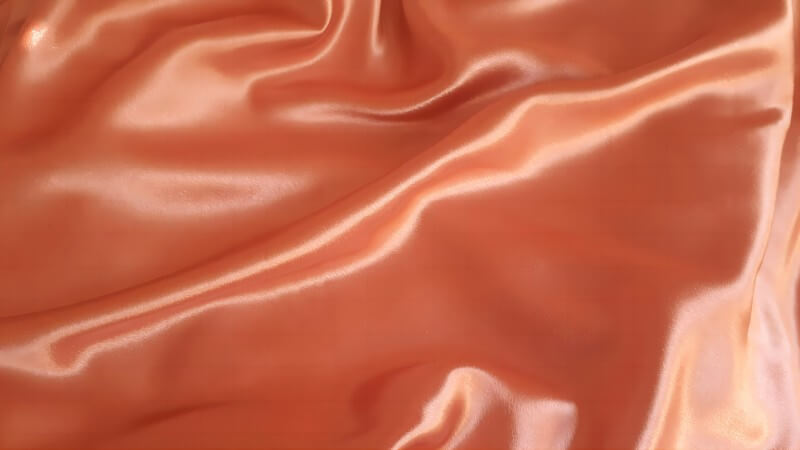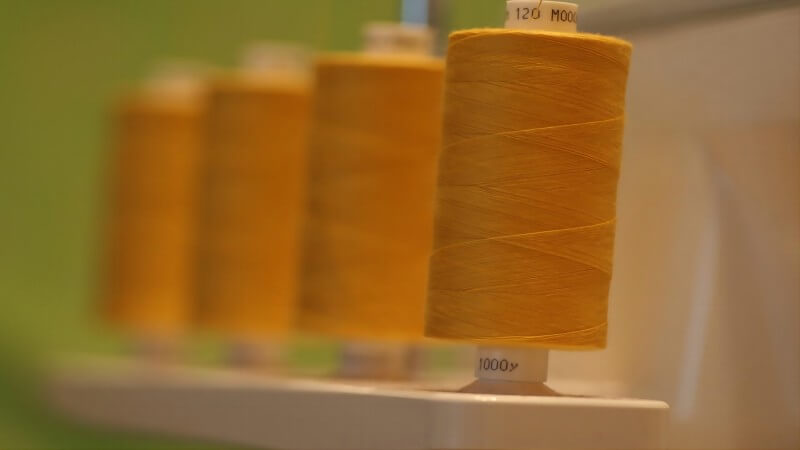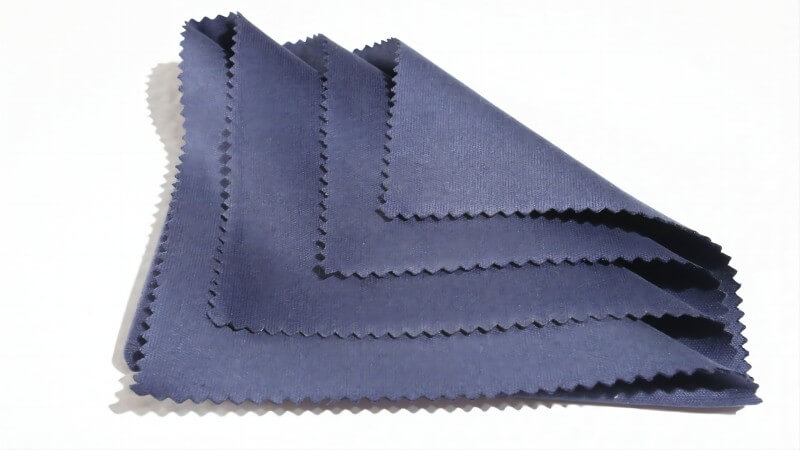
Dive into the fabric that has woven its way into nearly every aspect of our lives: polyester. From its surprising origins to its multifaceted applications, uncover the story behind this versatile material. This introduction will guide you through the creation, evolution, and the pivotal role polyester plays in the textile industry today, offering a clear, engaging journey through its history and future.
What Is Polyester Fabric?
Polyester fabric stands as a cornerstone in the world of textiles, celebrated for its resilience, versatility, and ease of care. Its ability to mimic natural fibers while offering enhanced durability and resistance to shrinking and stretching makes it a preferred choice for everything from everyday wear to high-end fashion designs.
Additionally, polyester's adaptability in blending with other fibers enhances fabric qualities, making it an indispensable ally in creating diverse textile products.
For entrepreneurs and creatives in the print-on-demand sphere, polyester's characteristics open a realm of possibilities. Its excellent dye-retention properties ensure that designs remain vibrant and fade-resistant, a crucial factor for brands aiming to make a lasting impression.
Moreover, the fabric's strength and longevity contribute to producing high-quality items that withstand the rigors of daily use, aligning with consumer expectations for sustainability and value. Engaging with polyester not only allows for a broad array of product offerings but also positions businesses at the forefront of innovation and eco-conscious manufacturing practices.

The History of Polyester
Polyester's inception in the early 20th century marked a significant advancement in textile technology. Originally created as an affordable and durable alternative to natural fabrics, its development was a response to the growing demand for versatile and resilient materials.
This synthetic fiber quickly garnered attention for its exceptional durability, resistance to shrinking and wrinkling, and ease of care.These properties catapulted polyester into popularity, making it a favored choice for a wide range of applications, from fashion to furnishings.
As environmental consciousness rose, the industry adapted, introducing recycled polyester, thus beginning a new chapter in polyester's history focused on sustainability and eco-friendliness. This evolution is not just a tale of technological progress but a reflection of changing consumer values and the print-on-demand sector's potential to meet them with innovative solutions.
What Is Polyester Made Of?
At its core, polyester is crafted from petroleum-based products, undergoing a chemical reaction involving coal, petroleum, air, and water. This process, known as polymerization, results in a strong, durable fabric that's highly resistant to shrinking and stretching, making it an ideal choice for a wide range of applications, from clothing to home furnishings.
Innovations in the production of polyester have also led to the development of recycled polyester, utilizing plastic bottles and other plastic products, thereby offering a more sustainable option for eco-conscious brands and consumers. This shift towards sustainability reflects the growing demand for environmentally friendly materials in the print-on-demand industry, showcasing polyester's versatility and its role in promoting responsible fashion and product manufacturing.
How Is Polyester Made?
Polyester, a fabric synonymous with durability and versatility, begins its journey in a surprisingly chemical-rich process. Crafted from petroleum products, this synthetic fiber is the offspring of a complex chemical reaction. Ethylene, a derivative of petroleum, undergoes polymerization, a process where molecules are transformed into a long, repeating chain known as a polymer.
This polymer, specifically polyethylene terephthalate (PET), is the core component of polyester fabric. Through melting and extruding this polymer into fibers, manufacturers can spin the base material that weaves into the polyester fabric we know today.
This step creates long chains of polymers, essential for the fiber's strength and durability. Innovations in recycling technologies have further enabled the use of post-consumer plastic bottles in polyester production, promoting sustainability within the industry. This process not only conserves resources but also reduces waste, appealing to eco-conscious businesses and consumers alike, making it a key talking point for those in the print-on-demand sector.

The Pros and Cons of Polyester
Polyester, a synthetic fiber, is renowned for its durability, resistance to shrinkage and wrinkles, and its ability to dry quickly.
Originating from petroleum, this versatile material is created through a chemical reaction involving coal, petroleum, air, and water. This process, known as polymerization, transforms the raw materials into a strong, resilient fiber that's become a staple in the fashion and textile industry.
Its wide application ranges from stylish apparel to robust home decor, highlighting its adaptability and utility. Notably, polyester's knack for retaining its shape and combating wrinkles makes it a go-to fabric for those seeking practicality and longevity in their textile choices.
On the flip side, polyester's synthetic origins raise environmental concerns. Its production is energy-intensive and relies on non-renewable resources, contributing to pollution and waste. Additionally, polyester garments tend to release microplastics during washing, which poses a significant threat to aquatic ecosystems.
As the textile industry evolves, the development of sustainable practices and technologies could redefine polyester's role, aligning it more closely with environmental stewardship.
Types of Polyester
Polyester, a term often synonymous with versatility in textiles, comes in various forms, each with unique characteristics and applications.
Among the most common is PET (Polyethylene Terephthalate), widely recognized for its use in both fabrics and plastic bottles. This type offers exceptional durability and moisture resistance, making it an excellent choice for a broad range of apparel, including sports and outdoor gear.
Another variety, PCDT (Poly-1, 4-cyclohexylene-dimethylene terephthalate), though less prevalent, boasts a higher resilience to stretching and bouncing back, ideal for heavier applications like draperies and furniture coverings.
On the environmental front, recycled polyester has gained momentum, turning plastic waste into reusable fibers, thereby contributing to sustainability efforts within the industry. As we explore the diverse types of polyester, it's clear that this versatile material is shaping the future of textiles, catering to a wide audience from fashion designers to corporate buyers, all while keeping an eye on ecological impact.
The Cost of Polyester
Navigating the cost of polyester involves understanding both its production expenses and its price point in the market. As a synthetic fiber derived from petroleum, the manufacturing process of polyester is heavily influenced by the fluctuating prices of crude oil.
This dependence can lead to variability in costs, affecting both producers and consumers.For businesses, especially those in the print-on-demand sector, this means that sourcing polyester products can be cost-effective, enabling competitive pricing for end customers without compromising on quality.
Moreover, the investment in polyester extends beyond its initial production cost. Its durability and ease of care contribute to a lower total cost of ownership over time, a factor highly valued by consumers looking for long-lasting products.
For entrepreneurs and small business owners, choosing polyester-based items can thus be a strategic decision, balancing upfront costs with long-term value.
Despite potentially higher production costs, the market demand for sustainable options can justify the price, aligning with the values of a broad audience including designers, influencers, and corporate entities, all keen on balancing economic and environmental considerations.
Who Is Buying Polyester?
Polyester's appeal stretches across a diverse spectrum of consumers and industries, making it a staple in the fabric world. Entrepreneurs and small business owners, particularly those in the fashion and textiles sectors, are drawn to polyester for its versatility and cost-effectiveness.
This synthetic fiber offers a blend of durability and easy maintenance that is hard to match, making it ideal for a wide range of products from everyday wear to specialty items like athletic gear and waterproof outerwear.
Meanwhile, corporations and organizations frequently choose polyester for uniforms and promotional merchandise due to its long-lasting nature, ensuring a professional appearance over time. Dropshippers and online retailers value the material for its wide appeal and the ability to offer high-quality products that are both affordable and durable. In essence, polyester's broad appeal ensures it remains a popular choice across various segments, underlining its pivotal role in today's textile industry.
The Using of Polyester
Polyester's widespread use in various industries highlights its versatility and enduring popularity. Its application ranges from clothing and accessories to home decor and industrial materials. Designers and artists particularly appreciate polyester for its ability to mimic the appearance and feel of natural fibers while offering enhanced functionality.
Beyond fashion, polyester plays a crucial role in the production of non-apparel items such as flags, banners, and even technical textiles used in automotive and aerospace industries.
Its strength and resistance to various chemicals make it an ideal choice for outdoor gear, including tents and covers that require weather-resistant properties. Entrepreneurs and business owners leverage these attributes to offer products that meet the demands of diverse markets, from active wear designed for athletes to durable work uniforms for corporate clients.
As the textile industry continues to evolve, the innovative use of polyester remains at the forefront, meeting the needs of a broad audience while pushing the boundaries of design and functionality.

Conclusion
In wrapping up our exploration of polyester, a synthetic marvel that has firmly woven itself into the fabric of our lives, let's distill the essence of what we've uncovered. Polyester, born from a complex chemical process involving petroleum, air, water, and coal, has emerged as a cornerstone of the textile industry. Its resilience, versatility, and cost-effectiveness make it a favored choice across a spectrum of applications, from high-fashion garments to everyday wear and beyond.
This material, for all its practical benefits, also carries with it considerations for the future. As we navigate the realms of innovation and sustainability, the evolution of polyester continues to reflect our collective aspirations for a balance between enduring quality and environmental stewardship.
As we move forward, the journey of polyester from its synthetic origins to its place in our eco-conscious future will undoubtedly continue to inspire, challenge, and drive the industry toward greater heights of innovation and responsibility.
FAQs
Is polyester a plastic or cotton?
Polyester is a synthetic material, not a natural fiber like cotton, derived from petroleum. This makes it a type of plastic, known for its durability and resistance to shrinking and wrinkling.
Is polyester a good or bad material?
Polyester's value varies; it's durable and versatile, yet its synthetic nature raises environmental concerns.
Is it safe to wear 100% polyester?
Wearing 100% polyester is generally safe, though skin sensitivity varies among individuals.
Which is better cotton or polyester?
Choosing between cotton and polyester depends on the use; cotton is breathable, while polyester is durable.
Is polyester worse than other fabrics?
Polyester's impact varies; it's durable and versatile but can be less eco-friendly than natural fabrics.










 Global Shipping
Global Shipping


 Made in USA
Made in USA


























